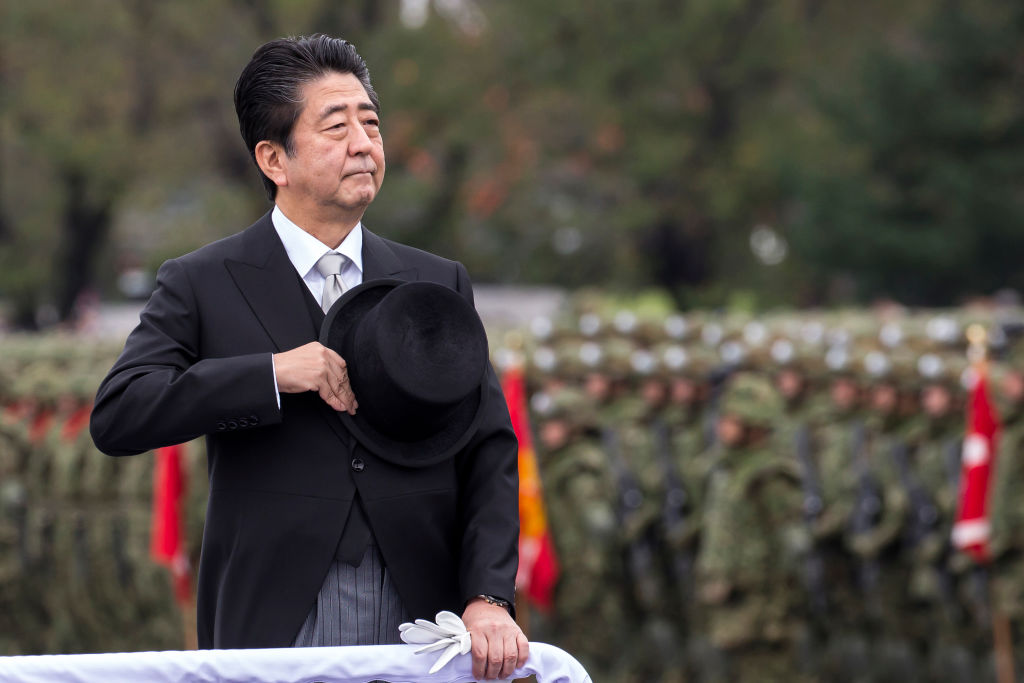
As Japan went to the polls for the half upper house election on 10 July, the shadow of former prime minister Shinzo Abe’s murder loomed over the result. His shocking death on Friday may have contributed to the higher voter turnout of 52% (compared to 48% last time), and exit polls will reveal the extent to which a sympathy vote mobilised voters.
Abe’s Liberal Democratic Party and its coalition allies have won 93 seats, well beyond the 82 required to command a two-thirds majority in that chamber. This will enable Prime Minister Fumio Kishida to push through his legislative program, including revising Japan’s constitution, without having to face the electorate again until 2025. The higher turnout also hands the LDP ruling coalition an opportunity to claim endorsement of those policies by the electorate, given that it exceeded 50% of eligible voters.
Security was central to the LDP’s platform in this poll. Since rising to the presidency of the party in 2021, Kishida has faithfully pursued the expansive policy suite promoted by Abe during his tenure: a proposed doubling of the defence budget, the embrace of effective counterattack capabilities in Japan’s defence arsenal, the acquisition of missile-defence capabilities, and revision of the pacifist clause of Japan’s 1947 constitution.
But we need to ask ourselves whether Kishida will continue to emphasise the ambitious security policy vision Abe promoted without the physical presence of Abe to incentivise him. Kishida’s policy positions were more dovish than hawkish before he rose to the highest office.
There is no doubt that Kishida owes his job to Abe’s decision to switch his votes in the LDP presidential race to Kishida. It’s also likely that this support from Abe and his Seiwa Seisaku Kenkyukai faction came with certain undertakings and assurances attached. How the largest LDP faction regroups, and who emerges to spearhead its policy preferences in the realm of security, are going to be important. At first glance, there is no one with Abe’s stature and substantive security policy background in the wings.
The part of Abe’s legacy that is going to be tested the most in the remainder of Kishida’s term is the security institutions he created. Backroom political promises may be broken, but it is another matter entirely to ignore security policy infrastructure that is now set in place and part of the policymaking landscape.
Abe’s transformative impact on how Japan’s security policy is formulated and coordinated is readily apparent. Abe centralised power over decision-making on security and defence in the Prime Minister’s Office (Kantei), delivering Japan’s first-ever national security strategy in December 2013. Abe also formed the National Security Council, supported by a secretariat in the Cabinet Office. Representatives from all relevant ministries now convene in the NSC instead of the prime minister having to go cap in hand to each ministry with various incentives in his back pocket to cajole agreement, and the LDP’s policy affairs research council finds it less easy to control security policy formation.
Abe also reduced the likelihood of unwelcome surprises by creating the Cabinet Bureau of Personnel Affairs in 2014, ensuring that questions concerning constitutional interpretation would be more likely to meet with sympathetic conclusions from appointees to key roles in the bureaucracy. This was vital to the passage of the 2015 suite of security legislation affirming that collective self-defence was not inconsistent with current interpretations of the constitution. It’s important to recall, as emotions swirl in the wake of the brutal attack on Abe, that public opinion was overwhelmingly against the passing of these laws, which the Abe administration achieved by guillotining debate and forcing it through.
Abe’s longevity in office also enabled him to facilitate future security policy development by weakening Japan’s self-imposed limits on weapons exports in 2014. The objective of revising the constitution was not realised in Abe’s lifetime, but he helped ensure that when the time came it would be easier to achieve. Constitutional revision still requires a two-thirds majority in each chamber of the Diet, but the ensuing national plebiscite will only require a simple majority thanks to the new laws passed in June last year.
On a deeper level, Abe played the long game in trying to persuade the Japanese public that security and pacifism were not diametrically opposed. His philosophy of so-called proactive pacifism tried to reconfigure the norm of pacifism away from simple anti-militarism and towards a more proactive contribution to the building and maintenance of peace on a global scale. The ‘free and open Indo-Pacific’ policy stance and the revitalisation of the Quad were important pillars of Abe’s attempt to redefine the meaning of peace for his people.
The deepening and broadening of Japan’s security relationship with Australia on Abe’s watch was likewise vital to his long-term vision. It defused suggestions that a more capable Japan would exclusively be beholden to, and subordinate to, its ally the United States.
Does Kishida actually embrace the same vision, and have the commitment, to break the taboos in security policy that were the driving force behind Abe’s political career? Due to the tragic circumstances of Abe’s demise, we are about to find out.

